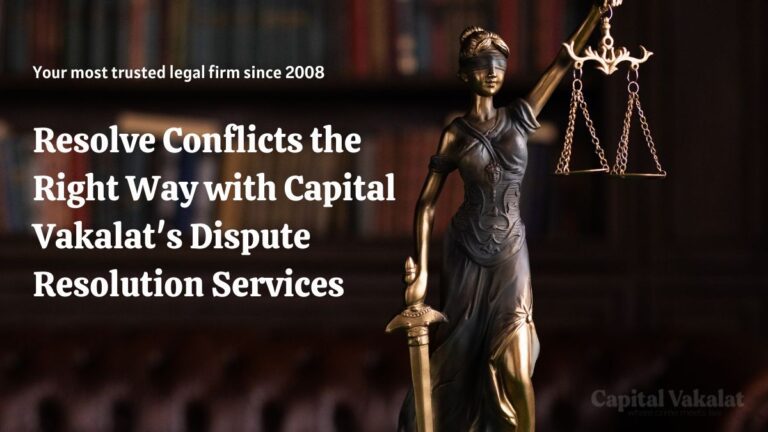Dispute Resolution

The process of settling conflicts or disagreements between parties is known as dispute resolution. There are numerous ways to do this, including through negotiation, mediation, arbitration, or lawsuit. Communication with the opposing party or parties in an effort to establish a mutually acceptable agreement is the process of negotiation.
This is frequently the initial step in settling a disagreement, and it can be done formally or informally. In the mediation process, a mediator serves as a neutral third party who assists the parties in communicating and coming to a mutually accepted arrangement.
A wide range of issues, including those involving contracts, employment, and family law, can be resolved through mediation. A neutral third person, known as an arbitrator, hears testimony and renders a decision that is legally binding on the parties. Although it is frequently speedier and less formal, this is comparable to a trial.
The process of settling a disagreement in court is known as litigation. This can entail bringing a lawsuit, conducting a trial, and making an appeal. When all other methods of dispute settlement have failed, litigation is frequently viewed as the last resort.
The ideal approach will rely on the particulars of the dispute because each of these conflict resolution techniques has benefits and drawbacks of its own. The fact that they are frequently less formal and more affordable than litigation is one of the primary benefits of alternative conflict resolution techniques including negotiation, mediation, and arbitration.
In contrast to leaving everything up to a judge or jury, they also provide the parties more influence over how the disagreement is resolved. Contrarily, litigation is frequently viewed as a more adversarial process and may be more suitable in situations when one party has done a major wrong, such fraud or contract violation, and the other side is seeking monetary damages or specific performance.
It’s crucial to keep in mind that in some circumstances, alternative dispute resolution processes may be required before a matter may be brought to court. For instance, before filing a lawsuit in family law cases, mediation is a required step in various nations and jurisdictions. The process of resolving conflicts or disagreements between parties is known as dispute resolution.
There are several options for resolving disputes, including negotiation, mediation, arbitration, and lawsuit. Each of these approaches has benefits and drawbacks of its own, and the optimal choice will be determined by the particulars of the disagreement.
When deciding on the best course of action for settling a disagreement, it’s vital to take the cost, time commitment, and expected result into account. The choice of the appropriate forum is a key component in conflict resolution.
This is in reference to where the disagreement will be settled. Due to the fact that many locations have distinct laws and procedures, the venue selection can significantly affect how the dispute is resolved. The enforceability of any agreements achieved through conflict resolution should also be taken into account.
This means that it’s crucial to make sure the contract is enforceable by law and can be upheld in court if necessary. The choice of the appropriate specialists is a key component in conflict resolution. The selection of individuals with specific expertise or skills who can help resolve the conflict is meant by this.
For instance, it might be required to hire a patent law specialist in a dispute involving intellectual property. Similar to this, appointing an engineering or architectural expert may be necessary in a building dispute.
Finally, it’s critical to remember that the aim of dispute resolution is to settle the conflict quickly and cheaply while, if at all possible, maintaining the parties’ relationship. Negotiation and mediation can frequently settle conflicts, preserving the parties’ relationship while sparing them the expenses and delays of court proceedings.
Communication is a crucial component of dispute resolution. Any dispute resolution procedure must have effective communication between the parties in order to be successful. This covers both written communication—like emails and letters—and verbal conversation.
Communication between the parties must be open and truthful, and they must keep each other updated on any new information or changes. It’s crucial to understand the many phases of a dispute resolution process and to be ready for each one.
This entails being aware of the applicable laws and formalities as well as the likely results. Realistic expectations and a willingness to compromise are also crucial. Technology utilisation is a crucial component in dispute resolution. The availability of numerous tools and platforms that can aid in the dispute resolution process has increased thanks to technological advancements.
Video conferencing, for instance, can be used to conduct virtual mediation and arbitration, and there are also online conflict platforms that can make the bargaining process easier. The use of technology can reduce costs and time while also giving parties a more accessible and practical option to settle disputes.
In summary, the process of resolving a dispute is complicated and involves a number of variables, such as the best method, the best venue, the enforceability of agreements, the choice of the right experts, the aim of resolving the dispute in a timely and cost-effective manner while maintaining the relationship between the parties, the significance of communication, the different stages of a dispute resolution process, the use of technology, and the realistic expectations of all parties.